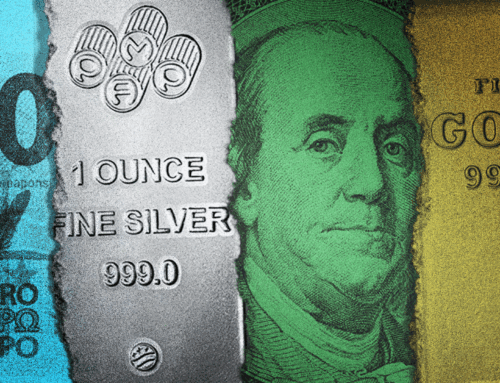Here’s the average 401(k) balance by age
June 25, 2025
When it comes to our retirement nest egg, we can’t help but wonder where we stand compared to our cohorts.
While Vanguard’s newly released “How America Saves” yearly report reveals that Americans’ 401(k) savings rates are at record highs — making up an average $148,153 balance and a median $38,176 balance, in 2024 — this is how Vanguard participants’ balances shake out by age group.
Average and median 401(k) balance by age
Below are the average and median account balances broken up by age groups, according to the Vanguard report. You’ll see that the averages are much higher than the median figures since averages are skewed by the few large balance accounts. For this reason, the median numbers give a better sense of what most people have actually saved.
| Under 25 | $6,899 | $1,948 |
| 25 to 34 | $42,640 | $16,255 |
| 35 to 44 | $103,552 | $39,958 |
| 45 to 54 | $188,643 | $67,796 |
| 55 to 64 | $271,320 | $95,642 |
| 65 and up | $299,442 | $95,425 |
Naturally, the older you get, the more money you likely have sitting in your 401(k); you’ve had more years to contribute to the fund and thus more money to grow over time. Once you hit retirement, though, your balance may start tapering off as you draw from your 401(k). We see this happen slightly in the median 401(k) balance column when going from the 55-to-64 age group ($95,642 median balance) to the 65+ age group ($95,425 median balance).
As you compare your 401(k) balance to others in your age group, keep in mind this general rule of thumb: Financial experts advise investing 15% of your income annually in a retirement account, and that includes any 401(k) employer match. As an example, if your company matches up to 6% of your salary and you contribute 6%, you’re already at a 12% savings rate — pretty close to the recommended 15%.
How to save for retirement without a 401(k)
Since 401(k)s are employer-sponsored retirement accounts, not everyone has access to one if their company doesn’t offer it. If this is you, make sure you have an IRA that you can contribute to for your nonworking years.
You can find an IRA through any big brokerage like Fidelity or Charles Schwab. Both traditional and Roth IRAs offer tax advantages and you open and manage the accounts entirely on your own. You can set up automated contributions into your IRA just like you can with a 401(k) to make saving for retirement seamless.
-
Minimum deposit and balance requirements may vary depending on the investment vehicle selected. No minimum to open a Fidelity Go® account, but minimum $10 balance for robo-advisor to start investing
-
Fees may vary depending on the investment vehicle selected. Zero commission fees for stock, ETF, options trades and some mutual funds; zero transaction fees for over 3,400 mutual funds; $0.65 per options contract. Fidelity Go® has no advisory fees for balances under $25,000 (0.35% per year for balances of $25,000 and over and this includes access to unlimited 1-on-1 coaching calls from a Fidelity advisor)
-
Find special offers here
-
Robo-advisor: Fidelity Go® IRA: Traditional, Roth and Rollover IRAs Brokerage and trading: Fidelity Investments Trading Other: Fidelity Investments 529 College Savings; Fidelity HSA®
-
Stocks, bonds, ETFs, mutual funds, CDs, options and fractional shares
-
Extensive tools and industry-leading, in-depth research from 20-plus independent providers
Terms apply.
-
Minimum deposit and balance requirements may vary depending on the investment vehicle selected. No account minimum for active investing through Schwab One® Brokerage Account. Automated investing through Schwab Intelligent Portfolios® requires a $5,000 minimum deposit
-
Fees may vary depending on the investment vehicle selected. Schwab One® Brokerage Account has no account fees, $0 commission fees for stock and ETF trades, $0 transaction fees for over 4,000 mutual funds and a $0.65 fee per options contract
-
Robo-advisor: Schwab Intelligent Portfolios® and Schwab Intelligent Portfolios Premium™ IRA: Charles Schwab Traditional, Roth, Rollover, Inherited and Custodial IRAs; plus, a Personal Choice Retirement Account® (PCRA) Brokerage and trading: Schwab One® Brokerage Account, Brokerage Account + Specialized Platforms and Support for Trading, Schwab Global Account™, Schwab Organization Account and Schwab Trading Powered by Ameritrade™
-
Stocks, bonds, mutual funds, CDs and ETFs
-
Extensive retirement planning tools
Terms apply.
Robo-advisors can help, too
If DIYing your retirement fund scares you, a robo-advisor like Betterment or Wealthfront is a better route. These automated investing platforms build and manage your retirement portfolio for you so you can be totally hands-off. There are tools to help you figure out how much money you need to save and to make sure you don’t contribute beyond the annual IRA limits.
Though you can contribute more to a 401(k) than an IRA, IRAs are still a good start to building up a solid foundation of savings.
-
Minimum deposit and balance requirements may vary depending on the investment vehicle selected. For example, Betterment doesn’t require clients to maintain a minimum investment account balance, but there is a ACH deposit minimum of $10. Premium Investing requires a $100,000 minimum balance.
-
Fees may vary depending on the investment vehicle selected, account balances, etc. Click here for details.
-
Robo-advisor: Betterment Digital Investing IRA: Betterment Traditional, Roth and SEP IRAs 401(k): Betterment 401(k) for employers
-
Stocks, bonds, ETFs and cash
-
Betterment offers retirement and other education materials
Terms apply. Does not apply to crypto asset portfolios.
-
Minimum deposit and balance requirements may vary depending on the investment vehicle selected. $500 minimum deposit for investment accounts
-
Fees may vary depending on the investment vehicle selected. Zero account, transfer, trading or commission fees (fund ratios may apply). Wealthfront annual management advisory fee is 0.25% of your account balance
-
Get $30 bonus when you fund your first taxable investment account
-
Stocks, bonds, ETFs and cash. Additional asset classes to your portfolio include real estate, natural resources and dividend stocks
-
Offers free financial advice for college planning, retirement and homebuying
Terms apply.
Subscribe to the CNBC Select Newsletter!
Money matters — so make the most of it. Get expert tips, strategies, news and everything else you need to maximize your money, right to your inbox. Sign up here.
Why trust CNBC Select?
At CNBC Select, our mission is to provide our readers with high-quality service journalism and comprehensive consumer advice so they can make informed decisions with their money. Every retirement savings article is based on rigorous reporting by our team of expert writers and editors with extensive knowledge of investing products. While CNBC Select earns a commission from affiliate partners on many offers and links, we create all our content without input from our commercial team or any outside third parties, and we pride ourselves on our journalistic standards and ethics.
Catch up on CNBC Select’s in-depth coverage of credit cards, banking and money, and follow us on TikTok, Facebook, Instagram and Twitter to stay up to date.
Read more
Editorial Note: Opinions, analyses, reviews or recommendations expressed in this article are those of the Select editorial staff’s alone, and have not been reviewed, approved or otherwise endorsed by any third party.
Search
RECENT PRESS RELEASES
Related Post




